Case Studies.
Add Case Study
Our Case Study database tracks 22,657 case studies in the global enterprise technology ecosystem.
Filters allow you to explore case studies quickly and efficiently.
Download Excel
Filters
-
(6,653)
- (2,601)
- (2,127)
- (945)
- View all
-
(5,642)
- (2,469)
- (1,692)
- (826)
- View all
-
(5,571)
- (2,178)
- (1,766)
- (643)
- View all
-
(5,247)
- (2,179)
- (1,715)
- (1,321)
- View all
-
(2,881)
- (1,448)
- (574)
- (376)
- View all
- View all 15 Technologies
- (1,985)
- (1,985)
- (1,915)
- (1,679)
- (1,629)
- View all 42 Industries
- (8,728)
- (4,742)
- (3,618)
- (3,233)
- (2,947)
- View all 13 Functional Areas
- (3,304)
- (2,787)
- (2,603)
- (2,006)
- (1,630)
- View all 129 Use Cases
- (13,581)
- (5,296)
- (4,272)
- (3,520)
- (2,856)
- View all 9 Services
- (504)
- (432)
- (416)
- (382)
- (301)
- View all 1083 Suppliers
Selected Filters
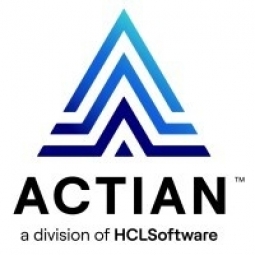
|
Unit4 C-Logic's High-Performance Accounting Solution with Actian Zen Database
Unit4 C-Logic, a Bruges-based company, was in search of a high-performance accounting solution that was easy to manage and designed around Belgian accounting rules. The company wanted an embeddable, performance-oriented database that could operate optimally without ongoing administration. The challenge was to find a database that could deliver high performance, extensibility, and scalability without requiring the active involvement of a database administrator (DBA). This was crucial as their target customers were small-to-mid-sized accounting firms, which typically do not have sophisticated (and costly) database administration skills. The company needed a database that could reliably deliver a high-performance experience without the ongoing attention or cost of a DBA.
|
|
|

|
Real-time Analytics for Targeted Social Video Campaigns: A Case Study on Unruly Media
Unruly Media, a London-based advertising technology firm, was faced with the challenge of delivering actionable, real-time insights to its clients to help them make decisions about expanding the social footprint of their critical video campaigns. The company needed to provide insights on where the video is running, who is viewing it, who has tagged it, and who is sharing it. The challenge was to provide these insights in real time, not days or weeks later. Unruly Media needed to tame the unruly stream of real-time data and enable clients to make use of it.
|
|
|
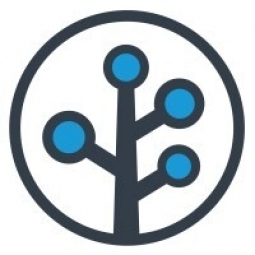
|
GoMechanic's Strategic Use of Branch's Deep Linking Solutions for Enhanced User Engagement and Conversion
GoMechanic, India's first technology-enabled automobile service network, faced a significant challenge in maintaining a high lifetime value (LTV) to customer acquisition cost (CAC) ratio. The company operates in a market where customers have multiple options to cross-check service quality and pricing, leading to a complex purchase flow and high drop-offs. This resulted in significant cart abandonment that needed to be tracked and fixed. Additionally, the nature of the automobile service industry meant that customers planned their car service far in advance, leading to a long duration between the first and second service. This made it difficult to justify the CAC for users making only a single purchase.
|
|
|

|
Airlines Reporting Corporation: Leveraging IoT for Improved Data Accessibility and Product Development
Airlines Reporting Corporation (ARC), a key intermediary in the travel industry, had accumulated a massive amount of data over its 50 years of operation. This data was stored in on-premises servers and was largely siloed by the company’s seven business domains. The company wanted to bring new products to market faster by making data more accessible across the business. However, ARC's existing product development processes relied heavily on the tribal knowledge of domain experts, which created bottlenecks and risked loss of expertise when employees left the company. In 2018, ARC decided to embark on a digital transformation initiative, which included modernizing business processes and migrating all their data to an AWS S3 Data Lake and Snowflake Data Cloud. The goal was to make data more accessible across domains and reduce reliance on individual expertise during product development. To ensure that employees could find the data they needed, ARC sought to implement a data catalog solution for their migrated cloud data.
|
|
|

|
Fifth Third Bank's Data-Driven Innovation with Alation's Data Intelligence Platform
Fifth Third Bank was facing a challenge in sharing and managing data across the organization. The bank needed a platform that could enable teams across the organization to use data to drive innovation and deliver superior customer engagements and outcomes. The lack of a centralized system for cataloging, tagging, governing, and sharing data was creating inefficiencies and slowing down the speed of operations. Furthermore, the bank needed to improve the security of its data management. The challenge was to find a solution that could provide a single source for data that could be easily accessed by data scientists, analysts, and engineers.
|
|
|

|
European Energy Company Harnesses the Power of Data to Become Fossil Free
Vattenfall, a Swedish power company operating in multiple European countries, is committed to achieving fossil-free living within one generation. This goal requires the company to decarbonize electricity production and collaborate with partners in other industries, such as steel production. However, the company faced challenges due to the complexity of its operations across different energy sectors and countries. For instance, wind energy produced in the Netherlands could be used to produce hydrogen for Swedish steel, requiring constant communication and data sharing. However, siloed data within Vattenfall hampered this level of collaboration. Furthermore, day-to-day operations like equipment performance evaluation and maintenance planning required extensive data insights. Vattenfall also had to comply with regulations in multiple countries and the European Union, including the General Data Protection Regulation (GDPR), nuclear regulations, and other government reporting requirements. Failure to comply could result in fines in the millions of Euros. Vattenfall needed to improve its data governance to comply with these regulations and to facilitate enterprise-wide collaboration.
|
|
|
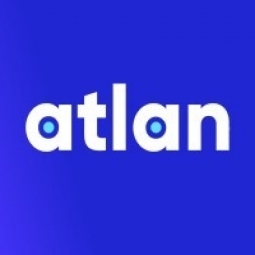
|
Chargebee's Transformation: From Data-as-a-Service to Reusable Data Products with Atlan
Chargebee, a leading technology solution for recurring revenue management, faced a significant challenge in early 2021 when its growth led to an increase in data requests. The company's Data Engineering team was responsible for processing these requests, both from internal colleagues and customers. However, the volume of requests was so high that internal data requests were often pushed to the back of the queue, leading to missed SLAs and dissatisfaction among stakeholders. The team attempted to address this issue by hiring new colleagues, but the transactional nature of their Data Engineering function made hiring difficult. They also tried to automate and standardize the process by creating dashboards and workflows, but these were often too bespoke to service with a single view of data. As a result, the data request volumes continued to grow, with the team receiving 350 requests per quarter, 80 of which were repetitive requests. Struggling to meet their SLAs and with growing escalations to subject matter experts, Chargebee needed to find a new way to meet their colleagues’ and customers’ expectations.
|
|
|

|
Democratizing Data: Postman's Journey to Streamline Data Access and Trust
When Postman's data team expanded, they faced a significant challenge in managing and understanding their data. The data was scattered across different locations, and often, the same data in different places contradicted each other. As the company grew, the data system, which was initially simple and manageable, became complex and difficult to navigate. The data was stored in tables, and the information about these tables was only known to the early members of the data team. This system was not scalable and could not keep up with the company's exponential growth. The company's goal was to democratize data, making it accessible and understandable to everyone in the company. However, the lack of consistency and context around the data made it difficult for everyone to understand and trust the data. The data team was constantly bombarded with questions about data location and usage, and the loss of any team member would mean the loss of crucial data knowledge.
|
|
|

|
Snapcommerce's Journey to Effective Data Cataloging
Snapcommerce, a tech-savvy organization that operates in the travel, fintech, and goods verticals, faced a challenge as it scaled its operations. The company's employees, who are active users of its data platform and assets, needed a reliable source-of-truth documentation in a user-friendly format to support their ongoing requirement for self-serve tools. The company was looking for a way to standardize and share data definitions across the organization. They also wanted a solution that eliminated the need for coding by business stakeholders and provided quick navigational capabilities. The challenge was to find a data catalog that met their specific criteria, including an easy-to-navigate interface, strong search capability, an automated crawler, clear definitions/glossary section, permission handling, a table preview and SQL component, and data lineage visualizations.
|
|
|

|
Engie's Pursuit of Carbon Neutrality through Data Governance Strategy
Engie, a leading European energy company, is on a mission to achieve carbon neutrality for its customers and operations. The company, operating across five continents and 70 countries, is facing the challenge of efficiently managing and utilizing vast amounts of data related to energy generation and distribution, pricing, weather, and customers. The data is critical for driving efficient renewable energy production. However, the data was siloed within separate business divisions, making it difficult to share and use effectively for strategic decision-making. Furthermore, the company was undergoing a major business transformation, changing from 25 country/regional operations to four enterprise-wide divisions. This transformation required a more agile and resilient approach to data management, especially in the face of global events like the climate crisis, war in Ukraine, and the COVID-19 pandemic.
|
|
|

|
Freddie Mac's Data Transformation with Collibra: A One-Stop Shop for Data
Freddie Mac, a leading mortgage loan company, was faced with the challenge of managing a colossal amount of data collected over the years. The data ecosystem was multi-generational, with Cobolt Mainframes, relational and star schema base data warehouses, data marts, and system-to-system integrations. The company also implemented Hadoop’s analytics platform for big data needs. This complex data ecosystem created complications for data consumers, making it overwhelming to locate the required data. The challenge was to transition to a self-governed cloud native data lake, making all data available in a single place, while ensuring security, resiliency, scalability, reliability, and availability. The business was heavily dependent on the seamless provision of this data for innovation, analytics, and predictive analysis.
|
|
|

|
Transforming Patient Experience: Froedtert & Medical College of Wisconsin's Journey with Collibra
Froedtert & the Medical College of Wisconsin (F&MCW), a regional health partnership, was facing challenges in managing and analyzing their vast data resources. The organization had a wealth of data from electronic medical records, financial spreadsheets, and HR data. However, the data was managed in silos using tools like SharePoint and Excel spreadsheets, leading to limited data sharing and collaboration between departments. There was also a lack of consensus on what discrete data metrics signified. Furthermore, there was a lack of data ownership, particularly among business and clinical leaders, who viewed data as a technical aspect and left its analysis to data governance and technical teams. The organization needed a solution that would enable better information analysis, foster data ownership, and improve data governance.
|
|
|
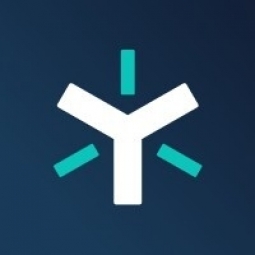
|
Barnhill Contracting Company: Streamlining Collaboration with Procore and Egnyte
Barnhill Contracting Company, a commercial building and infrastructure service provider, faced significant challenges in managing and accessing project documents. With an average of 90 active projects on Procore, the company needed a unified system for document storage and access. Seven years ago, the company initiated a strategic project to bring control and consistency to their file systems. The existing system was scattered, with documents stored in different locations, making it difficult for executives and project teams to locate the right files. The company also faced issues with File Transfer Protocol (FTP), with teams preferring to transfer data through traditional means such as burning it onto a CD. The company needed a solution that would allow teams to collaborate on large files internally and with external parties, and securely access files via mobile devices without the need for email applications. The company initially used a project management tool that did not integrate with Egnyte and did not meet all its needs, leading to confusion and duplication of documents.
|
|
|
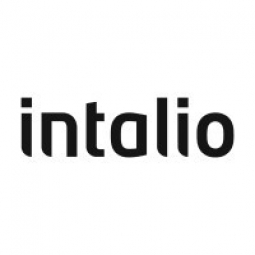
|
Digital Transformation of General Auditing Bureau with SHAMEL
Before the digital transformation, the General Auditing Bureau (GAB) of Saudi Arabia was dealing with a massive volume of paperwork. The data and documents associated with related governmental entities were collected and transferred manually, which was a complex and time-consuming process. This method of operation limited their performance quality and extent due to the need for a large number of auditors, the excess number of documents, and the complexity of the process in terms of transportation, room, and other risks. GAB was keen on implementing an electronic system to automate its business procedures, as part of the Saudi Vision 2030 for creating smart cities, the National Transformation Program 2020, and the strategic plan for the digital transformation of the General Auditing Bureau. GAB needed a solution to handle many manual tasks, fight corruption in public institutions, improve financial supervision, reduce the mismanagement of financial resources, and facilitate and accelerate the exchange of electronic documents and audit results.
|
|
|

|
Digital Transformation of Safran's Archiving System with Intalio
Safran, an international high-tech group, was struggling with the management and control of its immense volume of physical archives. The company was using a complex excel sheet with 154 columns, 500 document types, and 14 attributes. The system was inefficient, time-consuming, and failed to meet the company's business needs and legal regulatory standards. Safran was storing over 340,000 documents and 80% of 100,000 boxes at a third-party archiver. The company was also facing issues with access rights control and rule modification. The increase in legal, normative, regulatory, and internal requirements, along with the growing number of paper flows and audit requests from supervisory authorities, made it necessary for Safran to modernize its archiving system and secure the electronic flows. Frequent changes within the company, such as merges and reorganizations, further emphasized the need to standardize archiving practices across the entire group and improve efficiency.
|
|
|
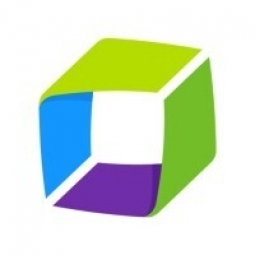
|
Clario Accelerates Clinical Trials with AI-Assistance from Dynatrace
Clario, a rapidly growing company in the healthcare industry, found itself grappling with an increasingly complex, hybrid environment due to a series of acquisitions. Each acquisition came with its own technology stack and toolchain, adding to the complexity of the existing legacy systems and cloud platforms. The situation was further complicated as Clario began migrating towards a cloud native architecture running on Kubernetes, with plans to transition these workloads to AWS. The use of disparate monitoring tools to manage IT performance resulted in a lack of observability across all business departments and IT environments. This made it challenging to identify, understand, and resolve any anomalies or performance issues promptly, thereby hindering innovation and optimization of user experiences. Clario recognized the need to standardize its CI/CD processes and consolidate its monitoring and management solutions into a single DevOps toolchain.
|
|
|

|
Optimizing Mirsal Performance and Enhancing Customer Experience: A Dubai Customs Case Study
Dubai Customs, a leading customs administration globally, was facing challenges in managing the performance and availability of its digital services. The organization relied on a variety of legacy monitoring solutions, many of which were native to its infrastructure spanning traditional data center and private cloud environments. Development teams used their preferred testing tools to ensure new builds met the required standards before being released to production. This fragmented approach resulted in delays to innovation and performance blind spots, often leaving Dubai Customs unaware of problems until customers reported them. A key concern was the performance of Mirsal, a collection of mission-critical applications used to process the movement of goods in and out of Dubai. Any failure in these applications could lead to long delays and tailbacks at the border, potentially causing commodities with a limited shelf-life to spoil.
|
|
|

|
loanDepot Enhances Lending Journeys with Dynatrace
loanDepot, one of the largest non-bank mortgage lenders in the U.S., has been successful due to its customer-centric loans platform that digitally captures and validates applicant's banking and asset documents and information. This technology-driven transformation has enabled the company to create a revolutionary digital-first approach, simplifying and speeding up transactions. However, as loanDepot's digital offerings grew, its infrastructure and operations became more complex. The company needed a way to move to a more scalable hybrid cloud technology stack, integrate core systems, and deliver new products faster, without affecting the customer experience. The challenge was to maintain its competitive advantage by continually optimizing the customer experience.
|
|
|

|
Migros Bank's Digital Transformation: Driving DevSecOps Culture with Dynatrace
Migros Bank, a Swiss bank with over a million customers, was founded on the principle of providing fast, easy, and human banking. As the market became more digitalized, the bank aimed to bring more of its customers online while maintaining its values by offering reliable and intuitive digital banking services. These services were powered by applications built on a hybrid technology stack, including an on-premises private cloud environment running on Kubernetes and RedHat OpenShift, as well as a legacy mainframe. The complexity of this hybrid technology stack made it challenging for Migros Bank to understand how backend changes impacted front-end experiences on its digital banking platforms, including critical processes such as customer onboarding and e-banking. The bank's services relied on multiple third-party applications and its own in-house software, but these remained a 'black box.' Migros Bank needed end-to-end visibility across its entire application stack for effective collaboration internally and with external suppliers to find solutions when problems arose.
|
|
|

|
Pasco County Enhances Trust and Reputation with Dynatrace
Pasco County, Florida, with a goal of becoming the premier county in the state, aimed to deliver services that exceed customer expectations, build trust, inspire confidence, and promote accountability. With a growing population of digitally savvy citizens, it was crucial to ensure that the county’s digital services were world-class, reliable, and resilient. However, as the county continued to digitize its services, it faced an increased risk from cybersecurity threats. The county needed to adopt measures to ensure the integrity of its systems and protect sensitive citizen data. Pasco County also needed to modernize its internal operations and security processes. Teams previously worked in silos with their own toolsets, leading to blind spots and lack of effective collaboration. They also relied on complex manual processes, which increased the risk of problems that could impact citizen experiences and allow vulnerabilities to leave systems exposed. This made it more difficult to ensure services were available 24/7, hindering Pasco County’s mission and impacting its ability to build trust and enhance the agency’s reputation amongst constituents.
|
|
|

|
USI Insurance Services Enhances Application Security and Reliability with Dynatrace
USI Insurance Services, a provider of tailored insurance services, was facing challenges in maintaining the security of its sensitive customer data and delivering better end-user experiences. The company's teams were relying on time-consuming manual processes to scan for vulnerabilities in their home-grown and third-party solutions, including the USI ONE platform. These scans were static and focused on pre-production, making it easy for newly discovered vulnerabilities to go undetected in production environments until the next scheduled scan. It was also difficult to spot vulnerabilities within some third-party applications, which remained a ‘black box’ for USI’s teams. In addition to these security challenges, USI also experienced application performance issues that were affecting end-users, and teams were losing valuable hours of productivity.
|
|
|

|
Vivint's Transformation in Smart Home Technology with Dynatrace
Vivint, a leading smart home and automation company, was facing challenges in maintaining flawless technology and software systems for its 1.9 million customers. The company's technology is deeply integrated into the lives of its customers, providing safety and automation services. Any system outage could potentially risk the safety of its customers, tarnish the brand reputation, and result in customer loss. In a rapidly changing technological world, Vivint needed to accelerate its innovation to maintain its competitive edge and bring new features to the market faster without compromising the customer experience. However, the company's existing monitoring solution was unable to provide the depth of visibility required to understand the root cause of problems impacting the customer experience in a timely manner. Vivint needed to enhance observability across its technology and software ecosystem to understand how its customers were interacting with its products and where improvements were needed.
|
|
|

|
WGU Enhances E-Learning Experience with Dynatrace
Western Governors University (WGU), a U.S.-based online university, is dedicated to making higher education as accessible as possible for a diverse range of students. These students require a seamless experience every time they log in to a WGU system, whether it's to study, access a course, or take an assessment. Any disruption can impact their studies, motivation, and grades. The performance and availability of WGU’s e-learning platforms, especially during peak times ahead of an assessment, are therefore crucial. These platforms are built on a dynamic cloud-based architecture, to enable greater agility and rapid innovation. However, with a constantly changing technology stack, the WGU team found it challenging to get a 360-degree view of all its applications or understand the critical dependencies across its heterogenous environment. They needed end-to-end observability across its applications and infrastructure to identify and resolve issues as quickly as possible, to maintain seamless student experiences.
|
|
|

|
Webscale Networks Streamlines Observability Stack with Edge Delta for Enhanced Efficiency
Webscale Networks, a technology provider for e-commerce businesses, was grappling with the complexity of managing multiple monitoring tools. The company had over half a dozen tools in place for monitoring, generating several terabytes of data per day. These systems created alerts whenever there was a problem, which were sent to FreshDesk, Webscale’s ticketing platform. In a given month, Webscale would receive over 2,000 alerts in FreshDesk, each taking upwards of 15 minutes to debug. This time was primarily due to all of their disparate data sources. The process added over 500 man-hours per month – time not spent on running queries or infrastructure operations. The company needed to reduce this time-consuming process and ensure a scalable, cost-effective approach. They also wanted to maintain granular insights while keeping costs in check.
|
|
|

|
LogicMonitor Streamlines Onboarding Process for Logicalis
Logicalis, a global information and communications technology (ICT) Infrastructure and Service provider (MSP), was facing a significant challenge in their customer onboarding process. The company offers a wide range of services including Cloud, SD Wan, Containers, DB’s and more to their customers around the world. However, the onboarding process was lengthy and complex, often taking up to a month to complete. The process involved level 1 engineers manually deploying and configuring devices, with heavy reliance on Level 2 or 3 engineers for advice on thresholds. This time-consuming process led to many inconsistencies and gaps in monitoring, as well as a delay in time to value, a critical factor in the highly competitive MSP industry.
|
|
|

|
Louisiana State University's Partnership with LogicMonitor for Enhanced IT Infrastructure
Louisiana State University (LSU), with its 35,000 students and over 250 buildings, operates a Network Operations Center (NOC) that runs 24/7, 365 days a year. The university experiences a significant network spike every August when students return to campus. The cyclical nature of this demand presents challenges for the NOC team, who are expected to provide 100% connectivity and uptime across a large environment. To improve visibility and provide a more proactive monitoring experience, LSU needed a unified observability platform that could handle their growing hybrid environment, quick anomaly detection, and automation. As LSU moved towards a modern hybrid IT infrastructure, with some resources remaining on-premises and others in the cloud, the team needed to ensure that their business was functioning properly, getting ahead of any bottlenecks, and delivering top quality service.
|
|
|
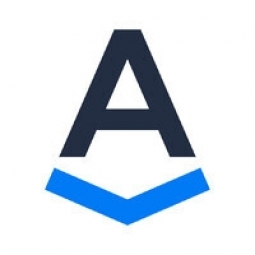
|
Traffic Force Leverages Assignar for Efficient Traffic Management Across Western Australia
Traffic Force, a leading traffic management provider in Western Australia, was facing challenges with their server-based system. The system was outdated and not evolving with the times, leading to a poor user experience and limited functionality for their traffic controllers, leading hands, and supervisors. The system only allowed for job allocation based on competency, with limited interaction for the staff. The process of notifying and confirming shifts was time-consuming, requiring individual calls to each traffic controller. Additionally, the company was struggling with paper-based timesheets, especially for crews working in remote areas. The process of collecting timesheets was cumbersome and often delayed due to lack of reception or the need for the crew to fax or scan the documents.
|
|
|

|
AI-Driven Customer Engagement: Tata Mutual Fund's Success Story
Tata Mutual Fund, a part of the renowned Tata group, was facing a challenge in improving customer experience, particularly for the digital-first millennials. The company aimed to reduce monthly customer calls by 70% and engage customers on their preferred channels, such as Messaging & WhatsApp. They needed an AI-driven solution that could seamlessly integrate with their existing customer support infrastructure. The primary objective was to provide faster query resolution and minimize human intervention. The solution was expected to offer an easy way for customers to get their queries resolved and be integrated into existing customer service channels.
|
|
|

|
Healthcare Debt Collections Agency Boosts Productivity with AI
A leading Illinois-based collections agency, specializing in healthcare and retail receivables, was facing a significant challenge in managing their after-call work. The agency wanted to minimize the time their agents spent on after-call tasks and increase their in-call productive time. The goal was to enable their agents to work on more accounts and focus more on talking to borrowers, rather than getting distracted by other tasks. The agency was looking for a solution that could help them streamline their operations, increase productivity, and ultimately, improve their bottom line.
|
|
|
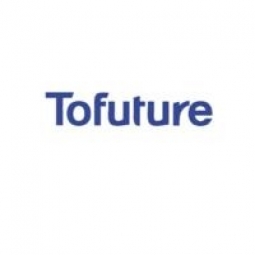
|
HKScan's Journey to Reliable and Up-to-Date ESG Data with Tofuture's Tool
HKScan, one of the largest food companies in Northern Europe, has been working on sustainability at the group level for a long time. The company has ambitious targets under its corporate responsibility programme, including achieving a carbon-neutral food chain by the end of 2040. However, the company faced challenges in collecting and managing Environmental, Social, and Governance (ESG) data across its 17 production units spread across Finland, Sweden, the Baltic States, Denmark, and Poland. The EU directive on the reporting of non-financial information, which came into force in 2017, necessitated more systematic ESG data collection. Previously, HKScan collected data manually using Excel spreadsheets, a method that was not only rigid but also prone to errors, especially given the size and geographical spread of the organization.
|
|




